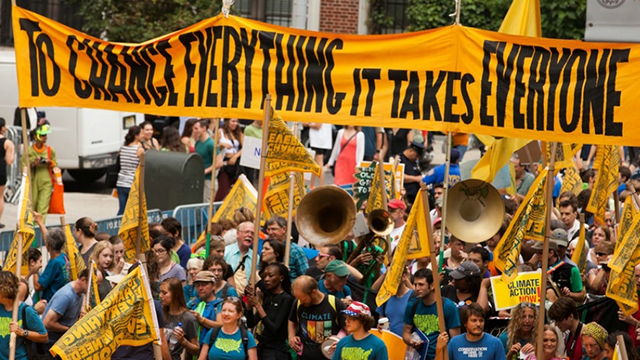Major cities launch plan to cut emissions from buildings
Published: Thursday, January 30, 2014
Ten major cities across the country announced yesterday they were banding together to save energy and cut greenhouse gas pollutants from a top metropolitan energy user: buildings.
Los Angeles, Boston, Chicago and Philadelphia are among the cities that are pledging to cut carbon emissions by up to 7 million tons annually and boost energy efficiency in their buildings, which is estimated to save nearly $1 billion annually in lower energy bills.
“By investing in building energy efficiency, these cities will help combat the pollution that is turbocharging climate change and the extreme weather across the country that’s impacting all of us,” said Frances Beinecke, president of the Natural Resources Defense Council, which along with the Institute for Market Transformation is bring the cities together.
Bloomberg Philanthropies, the Doris Duke Charitable Foundation and the Kresge Foundation are supporting the project and will provide funding to help cities develop their buildings’ efficiency plans.
She said the efficiency efforts will also create jobs in a range of professions, such as electricians, construction workers, engineers and architects.
Other participating cities are Atlanta; Orlando, Fla.; Houston; Kansas City, Mo.; Denver; and Salt Lake City.
Former New York City Mayor Michael Bloomberg, who made fighting climate change a top priority in office, said in a conference call that he hopes cities, which will design their own building energy efficiency plans, will spread their ideas to other cities across the U.S. and the world. He added that cities account for about 70 percent of the world’s greenhouse gas emissions at a time when the global population is rising as well.
More people every day move to cities, and countries like China and India are becoming more urbanized as people find better job opportunities there. Many of these people also eventually join the middle class, and with that, they consume more goods and live in bigger residences, all of which create more emissions.
Educating landlords, tenants and architects
Bloomberg pointed to one example from his efforts in New York to make buildings more efficient. “What we’ve been able to do is to get roughly half of all of the landlords, about 2,500 of them, who were using No. 6 heavy oil and got them to convert to natural gas,” a much cleaner fuel, he said.
Making buildings more efficient is tough for many reasons: Owners of buildings didn’t always make energy efficiency a priority when the buildings were constructed; to look more modern, architects put more windows in buildings than needed; and the heating and water systems in buildings often waste energy if they don’t run at peak efficiency (ClimateWire, Feb. 6, 2012).
Cities, which are often situated next to the ocean, also face profound risks from climate change, particularly flooding from severe storms, heat waves and dangers to their public transportation systems (ClimateWire, Jan. 23). Los Angeles Mayor Eric Garcetti said his city is already experiencing adverse effects.
“We’re experiencing a drought which is a direct response and direct outcome from what’s happening with the shifting temperature in the oceans off the Pacific Northwest, and we see many more years where this turns into not just a problem with greenhouse emissions but an impact on the livability of Los Angeles,” he said.
Garcetti said it was time for government to step in to “correct what is really a classic market failure” in that buildings sometimes can’t get the capital to invest in energy efficiency retrofit projects.
Cities have come together in the past for similar efforts, and some cities in this new plan, called the City Energy Project, will likely use legislation to have enforceable goals to cut emissions from buildings, said Laurie Kerr, the project’s director.



